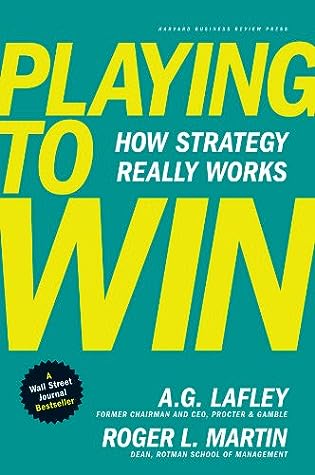More on this book
Community
Kindle Notes & Highlights
Passerini had crafted a richer way of thinking about the BPO relationship, one that asked, under what conditions can we help each other win?
A strategy is a coordinated and integrated set of where-to-play, how-to-win, core capability, and management system choices that uniquely meet a consumer’s needs, thereby creating competitive advantage and superior value for a business. Strategy is a way to win—and nothing less.
cost. The best-selling Camry and Corolla models have a reputation for superior quality, reliability, and durability, driving the significant price premium. This differentiation advantage means that when it wants to gain market share, Toyota can cut its prices without destroying profitability—and its competitors won’t have the resources to respond. Or Toyota can invest some of the premium to add new, desirable features to its vehicles. In doing so, it can actually reinforce its differentiation
Both cost leadership and differentiation require the pursuit of distinctiveness. You don’t get to be a cost leader by producing your product or service exactly as your competitors do, and you don’t get to be a differentiator by trying to produce a product or service identical to your competitors’. To succeed in the long run, you must make thoughtful, creative decisions about how to win. In doing so, you enable your organization to sustainably provide a better value equation for consumers than competitors do and create competitive advantage.
strong year,
Understanding customer value requires deep engagement. The traditional approach of checking in with salespeople occasionally to see what retailers are thinking and doing is no longer enough. A much higher level of sophistication—and real commitment—is required. Almost twenty years ago, P&G began integrating staff from marketing, manufacturing, logistics, finance, IT, and human resources into customer teams in customer business development (P&G’s sales function). These teams were colocated near P&G’s largest customers, like Walmart, Target, and Tesco. The post-1999 focus on core customers—those
...more
Part of CMK’s advance in consumer understanding came by way of insights from the world of design. There, ethnographic study of what consumers actually do—rather than what they say they do—is an important step to gaining a deep and holistic understanding of users. In part through the design initiative headed by P&G’s first ever vice president of design strategy and innovation, Claudia Kotchka, ethnographic research became an essential part of the P&G consumer understanding toolbox.
After customers, the lens turns inward: what are your capabilities and costs relative to the competition? Can you be a differentiator or a cost leader? If not, you will need to rethink your choices. Finally, consider competition; what will your competitors do in the face of your actions? Throughout the thinking process, be open to recasting previous analyses in light of what you learn in a subsequent box. The basic direction of the process is from left to right, but it also has interdependencies that require a more flexible path through it.
The difference between the two approaches cannot be overstated. In a standard strategy discussion, skeptics attack ideas as vigorously as possible to knock options out of contention, and defenders parry the arguments to protect pet options. Tempers rise, statements get more extreme, and relationships are strained. Meanwhile, little new or helpful information emerges. If instead the dialogue is about what would have to be true, then the skeptic can say, “For me to be confident in this possibility, we would have to know that consumers would respond in the following way.” This is a very different
...more
At this point, the critical issue is whether the decision-making group regards the test as valid. In this sense, the most skeptical member of the team is the most valuable. Typically, this person will have the highest standard of proof for any test, and building his or her commitment to the choice will be the most challenging. However, without his or her commitment, any consensus will inevitably be false. Hence, the most effective approach to overcoming barriers is to put the test design for each barrier condition in the hands of that condition’s greatest skeptic. If that person is satisfied
...more


